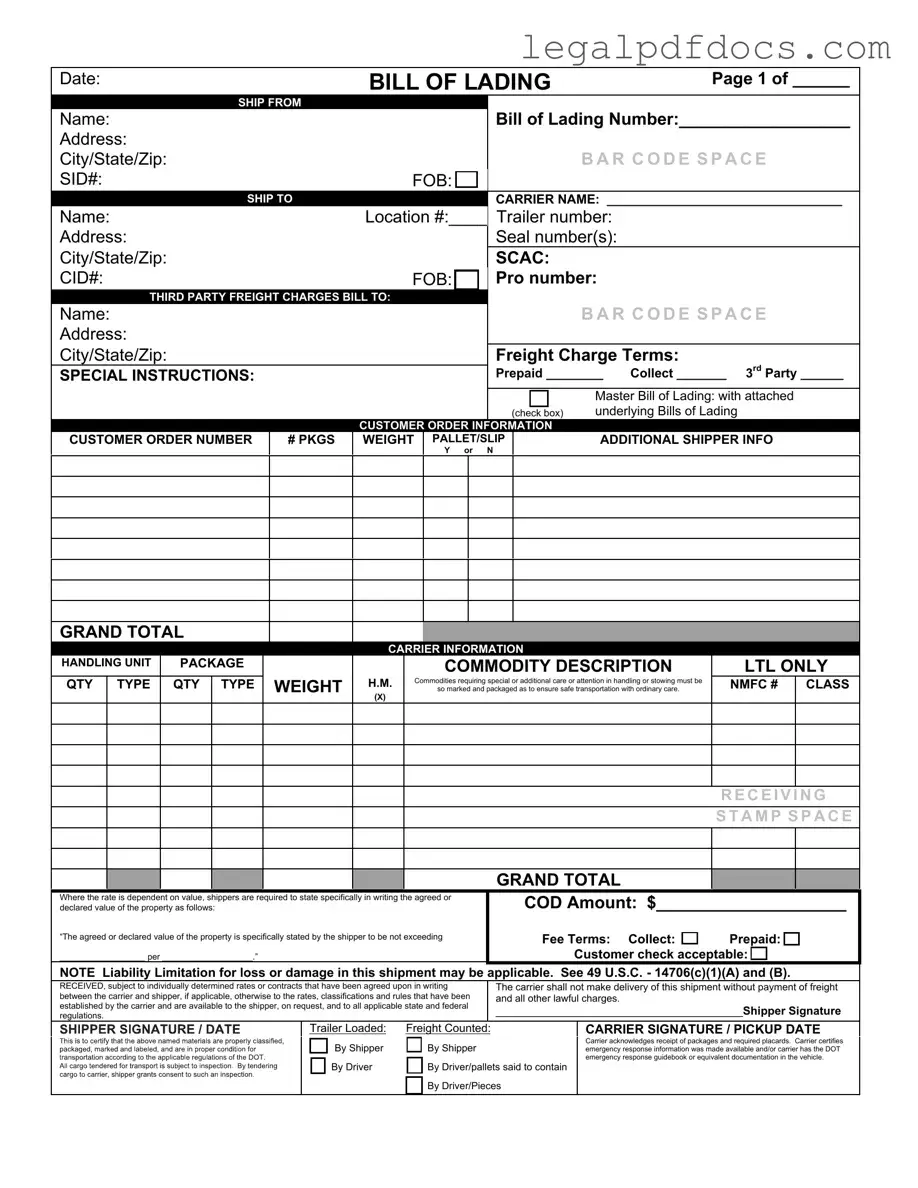The Bill of Lading with a Supplement form plays a crucial role in the shipping and transportation industry, serving as a key document that facilitates the transfer of goods. This form outlines the terms and conditions under which goods are transported, ensuring that both shippers and carriers understand their rights and responsibilities. It includes essential details such as the description of the goods, the names of the parties involved, and the agreed-upon shipping terms. Additionally, the Supplement section allows for the inclusion of extra provisions or specific instructions that may not be covered in the standard Bill of Lading. This flexibility is particularly valuable in complex transactions where unique circumstances must be addressed. By providing a clear framework, the Bill of Lading with a Supplement form helps to prevent disputes and ensures that the shipping process runs smoothly, ultimately protecting the interests of all parties involved.
